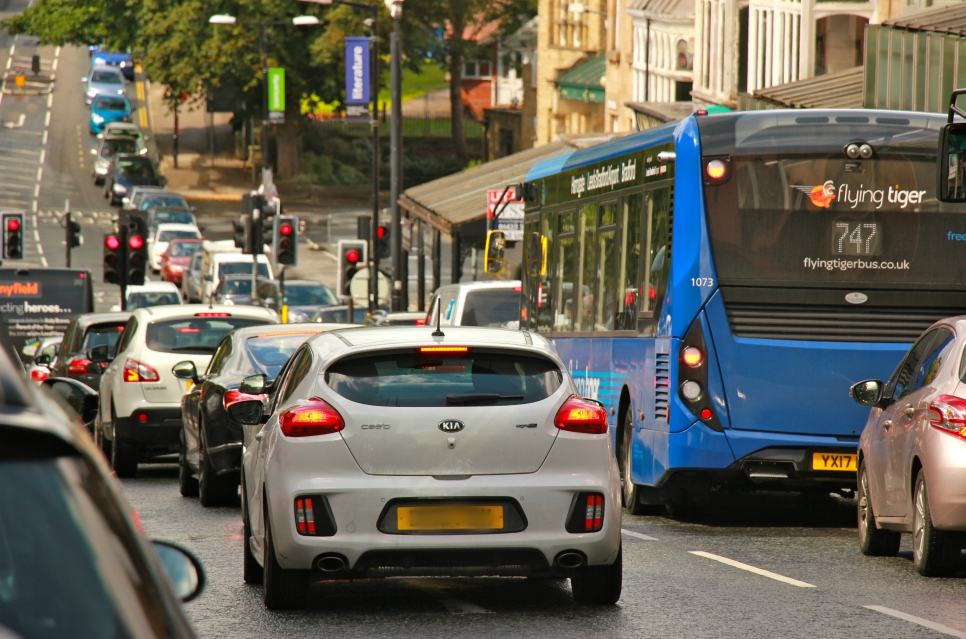Old Bilton is a lovely place. It's on Bilton Lane, which is close
to traffic-free. A triangle of land here includes Bilton Fields,
Bilton Beck, and the Nidd Gorge. The Nidderdale Greenway walking
and cycling route crosses Bilton Lane on its way north to Ripley.
The Nidderdale Greenway and Bilton Lane are used for walking and
cycling. Local people exercise their dogs in the fields here. It's a
tranquil haven for wildlife right on the doorstep of Harrogate and
Knaresborough residents.
Why Harrogate relief road is a terrible idea 2: Bilton is a haven
for wildlife

Swallow, Bilton Lane car park
Take a walk along Bilton Lane in the early morning, and you'll see
blackbirds hopping around, searching for invertebrates; there are
rabbits amongst the flowers; swallows nest in a barn at Bilton Dene;
the sparrows love the hedgerows lining the lane, and they zoom in
and out, chirping as loudly as they can. In the meadows, you might
spot a roe deer family.
Walking through the Nidd Gorge, you're struck by its unspoilt, wild
quality, as though a bit of pristine forest from South America had
taken root between Harrogate and Knaresborough. No doubt the steep
sides of the Gorge have saved it from development over the
centuries.

Kingfisher
If you keep a sharp look-out, you could be treated to the sight of
kingfisher on its perch, or 'commuting' along the river going
'peep-peep-peep-peep-peep'. If you're very lucky, you might come
across an otter. On the edge of the Gorge, owls search for voles in
the fields.

Little owl, Bilton Dene Farm
Why Harrogate relief road is a terrible idea 2: State of Nature

Nidd Viaduct
It may be that in the past, development happened without much
thought to wildlife. That's probably why the UK has become one of
the most nature-depleted countries in the world, according to the
2016 State
of Nature Report.
The State of Nature report identifies the reasons for declines in
wildlife. The intensification of agriculture has had the biggest
impact, and climate change is highly significant. Loss of green
space and habitat is another factor.
Low-intensity management of agricultural land, and habitat
creation, are the most beneficial measures that can be taken for
wildlife. Habitat creation is what the volunteers of the Bilton Conservation
Group have been involved in since 1982 - or perhaps more
accurately, working to ensure that a wonderful area reaches its full
potential for wildlife and local residents.
Nature reserves are important, but working beyond the boundaries of
protected areas is vital too, to create bigger, better wildlife
sites, and a joined-up network of places where animals can live, and
which they can move between.
State of Nature identifies that contact with nature can have
positive impacts on young people's education, physical health,
emotional well-being, and personal and social skills. It helps them
become responsible citizens. If children are connected to nature,
they are more likely to enjoy it, and to want to save it. Having
nature near their home is one of the key things that contributes to
children connecting with nature.

A blackbird with a wild cherry, Nidderdale Greenway
The report says, 'We have a moral obligation to save nature, and
this is a view shared by the millions of supporters of conservation
organisations across the UK. Not only that, we must save nature for
our own sake, as it provides us with essential and irreplaceable
benefits that support our welfare and livelihoods.'
Why Harrogate relief road is a terrible idea 2: the Mammal Society
report

Hedgehog
On 13th June 2018, the
Mammal Society and Natural England reported the results of
their comprehensive review of mammal populations: one in five
British mammals faces a high risk of extinction.
The red squirrel is one of the animals facing a threat to its
survival in Britain. Water voles and hedgehogs have declined by
around 66% in the last 20 years.
Climate change, loss of habitat, and pesticides are all cited as
reasons, as are road deaths. Everyone must have seen dead hedgehogs
on the roads of North Yorkshire. The Executive's Harrogate relief road
proposals suggest a route one side of Bilton Lane or the other, with
a link to it. What would a road carrying 1,000 cars an hour through
this area do to the hedgehog population?
Why Harrogate relief road is a terrible idea 2: summary

The area around Old Bilton is much-used and valued by local people,
and it's a haven for wildlife.
We know that wild animals and birds are in decline, and there are
multiple pressures on them. They need places to live. We have a
moral obligation to the natural world, to let it live, and not to
destroy its habitat. When we damage natural environments, we're
ruining them for the animals and birds that live there, but for
ourselves as well.
Road-building is a very effective way to destroy nature. It divides
habitat, and degrades it, and many individual animals are killed by
vehicles.
You cannot put a road carrying 1,000 cars an hour through this area
without changing its character completely. It would no longer be a
lovely, peaceful, wildlife-rich place. There would be noise,
pollution, and danger.
We've sacrificed enough of our quality of life, the places we
value, and our wildlife, to the motor car. Enough is enough.
The message to the Executive must be clear and unequivocal: no. We
will not put up with this.











